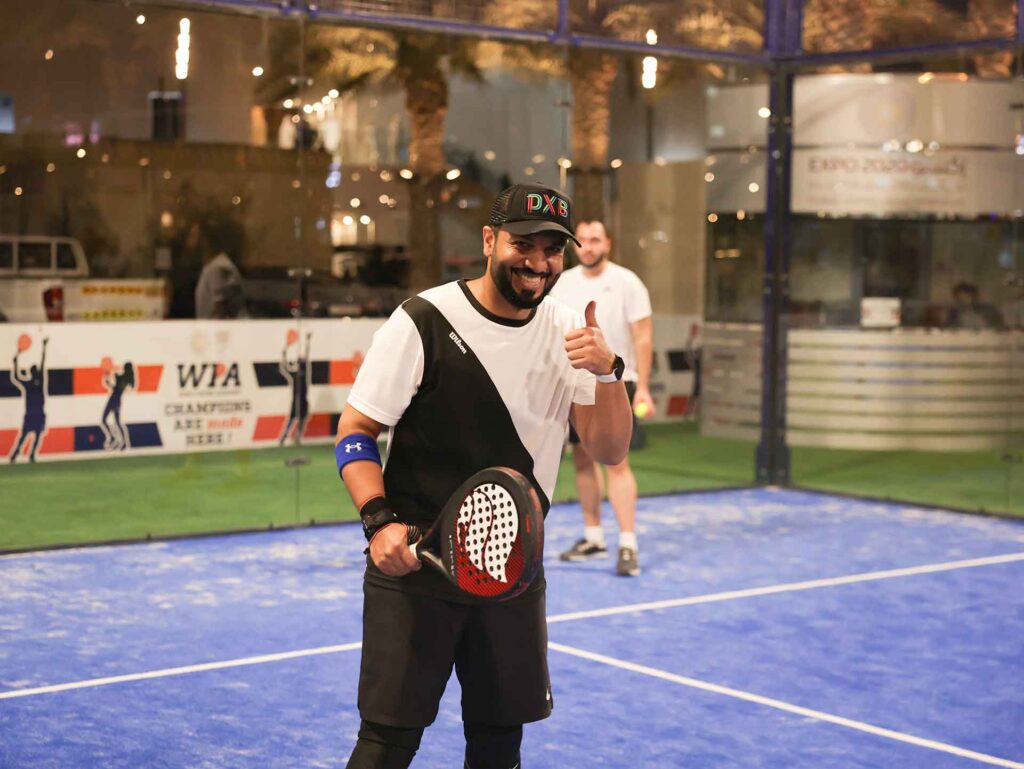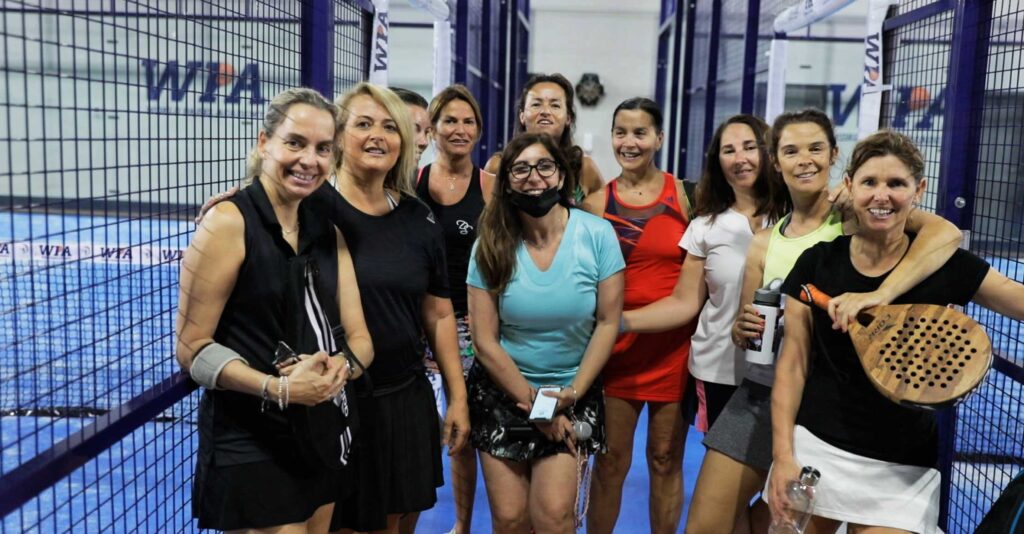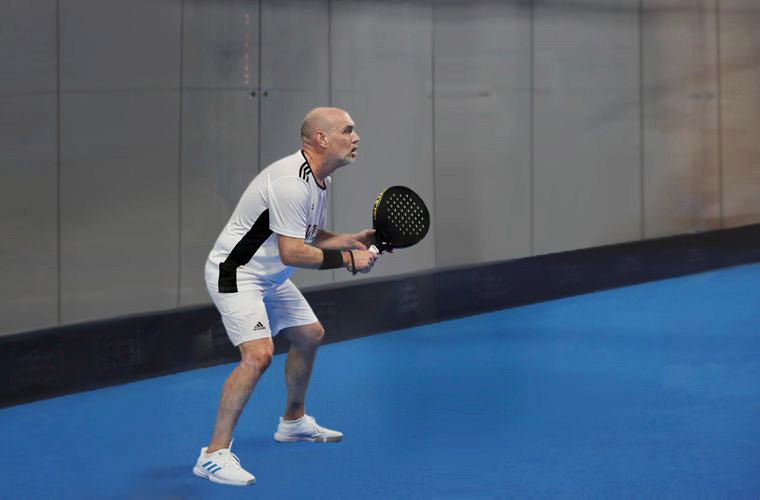WHY IS PADEL TENNIS
THE BEST GAME FOR
YOUR BODY AND MIND
THE BENEFITS OF PADEL
Padel Tennis is a fun sport which is easy to start playing and allows you to quickly build your confidence from the first game, as it requires strategy rather than power. As the game is played in doubles, Padel is a very social sport which can become competitive over a short period of time. Whether you win or lose, the time on court is stimulating and rewarding as the shots and rallies are exciting throughout every game.
Of course strength and conditioning can help you to improve your skill level, like any sport, but it is not vital to enjoy Padel and although it can be a high energy activity, it is relatively low impact on the body. Best of all, Padel can be played all year round as courts can be indoor and or covered to protect players from the rain, snow and wind.

PADEL IS GOOD FOR YOUR MENTAL
AND PHYSICAL WELLBEING
Mentally, the higher speed and changes in Padel means that the brain has to calculate quickly where the ball will go and what shot is required to return the ball. Padel clearly is more dynamic than tennis but less so than squash. Your brain is challenged more than in tennis because Padel is easier to play and learn than tennis, as less physical strength and technical capacities are needed.
There are more challenges in Padel than in many sports, but you don’t have to have extreme technical skills so these challenges are more easily achieved. More challenges means more adrenaline in your brain and more challenges achieved means more dopamine and endorphins in your brain: so you will get more rewards in Padel than with other ball games, which are technically more difficult.
This is a key reason why once you have played Padel you get hooked so quickly. It is not uncommon for people who try Padel, to want to play it again and more frequently than any other sports, which can even happen after one hour of getting acquainted with the game!
Padel is a ball sport so that means the game has speed – Speed of the ball, speed of different bounces and ricochets, speed of the brain to select the right shot and the speed of tactical changes between players to outsmart their opponents. This has a lot to do with the fact that the court is smaller and you are closer to each other. The ball has less velocity than in tennis so there is a much better chance that your opponents can return the ball, as the walls may be used which allows the ball to keep moving and consequently stays in play much longer.
PERSONAL & SOCIAL DEVELOPMENT
Officially Padel has to be played with 4 players, 2 against 2. This encourages more social interaction because you stand close together on a small court. As mentioned previously playing Padel uses more dopamine (more rewarded challenges) than other more difficult ball games so your mood will be better, your so-called defense systems will be more relaxed as Padel has more positive social interactions than with other more demanding ball games.
In Padel, skill level differences are less important to be able to enjoy a match as it is more forgiving than tennis. In fact, the time you spend together in a positive mood and being more active, increases the social bond more than in a match with a lot of faults, dead moments and ball fetching. This is why Padel can be played with young people and older people all together as its technically less challenging and you get more ball contact, which is why Padel is an ideal family sport.

PHYSICAL WELLNESS
Padel courts are smaller, the walls can be used, the speed of the ball is less, so there are less difficult and slower turns possible in Padel. That gives less strain on your back. Also, in Padel it is not allowed to serve overhead, it has to be done after bouncing the ball once and hit underhand. This puts much less strain on your back than tennis or squash. Due to the service which is exclusively underhand, there are much less shoulder injuries than in tennis.
The speed of a tennis ball and the higher tension on a tennis racket puts much more strain on your arm, wrist and elbow when returning the ball. In Padel, the velocity of the ball is less, the blade is much closer to your wrist and body so there is less force on these parts of your body. There are much less known reports of Padel players having problems with their wrists or elbows. Of course, when playing frequently even in Padel these problems can occur, but less often than with tennis.
Padel puts much less strain on your body parts than tennis or squash, whereas in these sports a lot of ankle, back or shoulder injuries are seen but in Padel this is less likely. It is possible to play Padel into retirement age without serious physical problems. At the same time it still challenges your body as all muscles are involved and fitness is still important.

| Cookie | Duration | Description |
|---|---|---|
| cookielawinfo-checkbox-analytics | 11 months | This cookie is set by GDPR Cookie Consent plugin. The cookie is used to store the user consent for the cookies in the category "Analytics". |
| cookielawinfo-checkbox-functional | 11 months | The cookie is set by GDPR cookie consent to record the user consent for the cookies in the category "Functional". |
| cookielawinfo-checkbox-necessary | 11 months | This cookie is set by GDPR Cookie Consent plugin. The cookies is used to store the user consent for the cookies in the category "Necessary". |
| cookielawinfo-checkbox-others | 11 months | This cookie is set by GDPR Cookie Consent plugin. The cookie is used to store the user consent for the cookies in the category "Other. |
| cookielawinfo-checkbox-performance | 11 months | This cookie is set by GDPR Cookie Consent plugin. The cookie is used to store the user consent for the cookies in the category "Performance". |
| viewed_cookie_policy | 11 months | The cookie is set by the GDPR Cookie Consent plugin and is used to store whether or not user has consented to the use of cookies. It does not store any personal data. |